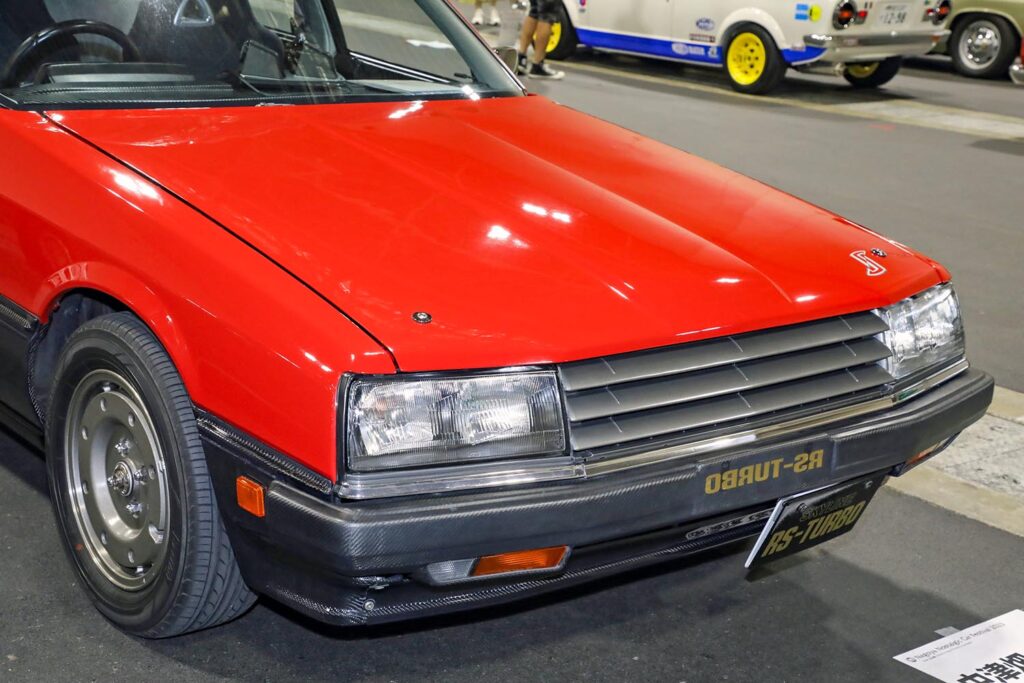The Skyline has been driven for 40 years
Mr. Nakatsuhata, a Nissan DR30 “Skyline” driver, has been carefully maintaining his DR30 for 40 years, which was given to him by a friend who bought it new and has continued to drive it while adding a modern twist. His policy was to keep the styling of the car as stock, repairing the parts that had deteriorated over the years, and tuning the car for the future.
The Skyline’s pedigree was destined for speed
The Nissan “Skyline” car is a special car with a special destiny when looking back over the past generations. It all started when the second-generation S54 Skyline GT overtook the Porsche Carrera GTS at the Japanese Grand Prix, albeit only for one lap. From that moment on, the Skyline’s raison d’etre became that it “had to be a fast car” in any era. For this reason, the packaging of the car, but especially the engine was given a high-performance unit before any other model, and the stage was mainly focused on the race circuit.
After the oil crisis, the Skyline had been away from the race circuit for a long time, but it was the 6th generation DR30 Skyline RS that brought the Skyline back to the place where the smell of oil and the cheers of motor fans mingled once again.
In August 1981, the DR30 Skyline was redesigned to abandon its traditional surf lines to create a new image of the Skyline for a new era, and in October of the same year, the RS, which could be called the strongest model, was added to the lineup, making it a very special car. The 2L 4-cylinder 4-valve DOHC engine was the first DOHC 4-valve unit for the Skyline since the GC110 Skyline GT-R. The engine model was the FJ20ET, with a revolutionary mechanism that used a competitive system in which the camshafts directly pushed the intake and exhaust valves, and the camshafts were driven by a double roller chain. It was designed as the most powerful racing unit with a turbocharger to achieve even higher power.
For the DR30 Skyline RS, turbocharging was synonymous with the car, and even on the production car, the 4VALVE DOHC RS-TURBO decal was placed above the side steps to strongly emphasize this.
Extreme turbo suddenly hit a guardrail
Mr. Nakatsuhata was fascinated by the Skyline with the FJ Turbo engine, which made a shocking debut at the time. Of course, the appearance of the Super Silhouette RS, which made its racing debut at Fuji Speedway in 1982, and its subsequent success on the circuit also had an impact, but Mr. Nakatsuhata was more interested in the engine than in the styling, and always wanted to drive one himself to see how it drove. He had always wanted to experience what it was like to drive one himself. At that time, a friend of his happened to buy a new DR30 Skyline RS. The friend was secretly aiming for it because he might give it away when the car’s inspection expired. Then, at the time of the inspection, his friend gave him the car as a special gift, and he became the owner!
However, while he was happy, when he stepped on the accelerator to see what kind of acceleration it would give me, it didn’t go as fast as he had hoped. Then, he stepped on the gas pedal further, and …… after a brief pause, there was a strong thumping acceleration that took me from below the waist to the front! The car tailslides and hits the guardrail.
At this time, turbocharged cars were still rare, and Mr. Nakatsubata naturally had no experience with turbochargers. He had never heard of turbo lag, and his mistake was to accelerate the car as if it were a car with no power! He told us that it was only after the crash that he learned all about it. After that, he learned the quirks of the car and was able to drive peacefully without causing any accidents.
Full FRP body, mildly tuned engine
When I was approaching 40 years of owning this car, the body was getting more and more worn and rusty, and many parts of the fenders were becoming cookie-cutter. The engine also began to leak a lot of oil and was in serious need of an overhaul. So, he consulted a friend’s store for an overhaul to refresh the engine. The factory steel sheet itself was severely damaged, so we decided to convert as much of the exterior as possible to carbon FRP, thinking that it would last longer if we relied on FRP rather than having it repaired through sheet metal work. The body parts include the front bumper, front fenders, hood, doors, side steps, rear bumper, rear panel, etc., all made of carbon FRP except for the roof and quarter panels. Incidentally, this body part was a kit made by Restored.
The engine, including the turbine, was left stock, but the ignition and control systems were replaced with strengthened components. The computer was changed to HKS F-CON V Pro for more detailed settings, and the airflow system was changed from a hot-wire system to a pressure sensor system. In addition, the throttle was replaced with the SR20DETT from the S13 “Silvia” to improve performance and durability.
This tuning improved the low RPM torque characteristics dramatically, and the turbo was also changed from the FJ20’s thumping turbo characteristics to a milder acceleration. Although it is not as fun to drive, the current version is by far the easiest to drive for everyday use, which is why he likes it so much.
Currently, Mr. Nakatsuhata’s age is approaching 70. He said that he has made many memories with his DR30 Skyline RS until he reached this age, and that he would like to keep it as his beloved car, never to be handed over to anyone else, and to continue to drive it with great care.
